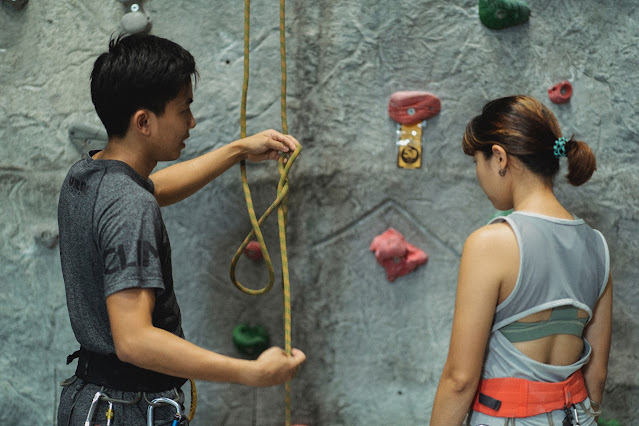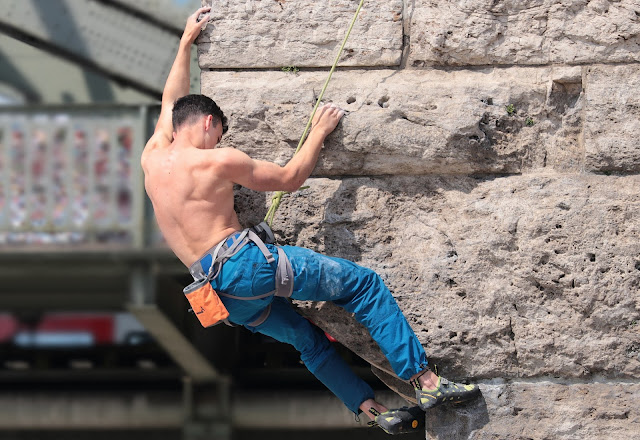Might it be said that you are prepared to take your climbing abilities higher than ever? Look no farther than indoor climbing! This exhilarating game offers a protected and controlled climate for climbers, everything being equal, to stretch their boundaries and challenge themselves. In this aide, we'll investigate the intricate details of indoor moving, from the hardware you'll have to the strategies you'll use to rise to the top. So snatch your chalk pack and we should get everything rolling!
What is Indoor Climbing?
Indoor climbing is a kind of rock climbing that happens inside, normally on counterfeit climbing walls. These walls are intended to copy the difficulties and territory of outside rock developments, making them the ideal preparation ground for climbers hoping to level up their abilities. Indoor climbing is a famous game for the two fledglings and experienced climbers the same, offering a protected and controlled climate to rehearse new methods and push past your usual range of familiarity.
Benefits of Indoor Climbing
Beside the excitement of overcoming a difficult trip, indoor climbing offers a great many physical and mental Benefits. Here are only a couple:
Strengthens muscles:
Climbing requires a lot of chest area and center strength, making it an incredible full-body exercise.
Further develops adaptability:
Climbing requires a lot of adaptability and scope of movement, assisting with working on in general portability.
Builds concentration and fixation:
Climbing requires serious concentration and focus, making it an extraordinary mental exercise too.
Boosts confidence:
Overcoming a difficult trip can do ponders for your fearlessness and confidence.
Offers a sense of community:
Indoor climbing exercise centers are frequently loaded up with steady and empowering climbers, making major areas of strength for an of local area and kinship.
Equipment Required for Indoor Climbing
Before you hit the climbing exercise center, you'll have to ensure you have the right Equipment. You'll require this:
Climbing shoes:
Particular shoes intended for moving with a tacky elastic sole for better hold on the wall.
Bridle:
A safety saddle that fits cozily around your midriff and legs, permitting you to join to a rope for security.
Chalk sack:
A little pack loaded up with climbing chalk to assist with keeping your hands dry and further develop grasp.
Belay gadget:
A gadget used to control the rope and forestall falls. There are various kinds of belay gadgets accessible, so make certain to pick one that is ideal for you.
Rope:
A unique grappling rope used to join to your tackle and give safety if there should be an occurrence of a fall.
Carabiners:
Metal clasps used to associate your outfit to the rope and different bits of Equipment.
Strategies for Indoor Climbing
Since you have your hardware, now is the right time to become familiar with some climbing strategies. The following are a couple to kick you off:
Footwork:
Utilizing your feet to help your weight and move yourself up the wall is critical to productive climbing. Work on putting your feet purposely and utilizing within and outside edges of your shoes to grasp the holds.
Hand arrangement:
Appropriate hand situation is critical for keeping up with equilibrium and hold on the wall. Keep your hands open and loose, utilizing your fingers and palms to grasp the holds.
Body positioning:
Body positioning is vital to moderating energy and keeping up with balance on the wall. Work on keeping your weight focused over your feet and utilizing your hips and legs to produce force.
Relaxing:
It's not difficult to neglect to inhale when you're centered around a difficult trip, yet legitimate breathing can assist you with remaining cool-headed and centered. Work on taking full breaths and breathing out leisurely as you climb.
Safety Tips for Indoor Climbing
While indoor climbing is for the most part a protected game, it means quite a bit to play it safe to forestall mishaps and wounds. The following are a couple of security tips to remember:
- Continuously wear a helmet while climbing outside.
- Ensure your Equipment is in great shape and appropriately fitted.
- Twofold actually take a look at your bunch and belay framework prior to climbing.
- Discuss obviously with your climbing accomplice and belayer.
- Begin with more straightforward trips and move gradually up bit by bit.
- Pay attention to your body and enjoy reprieves depending on the situation.







